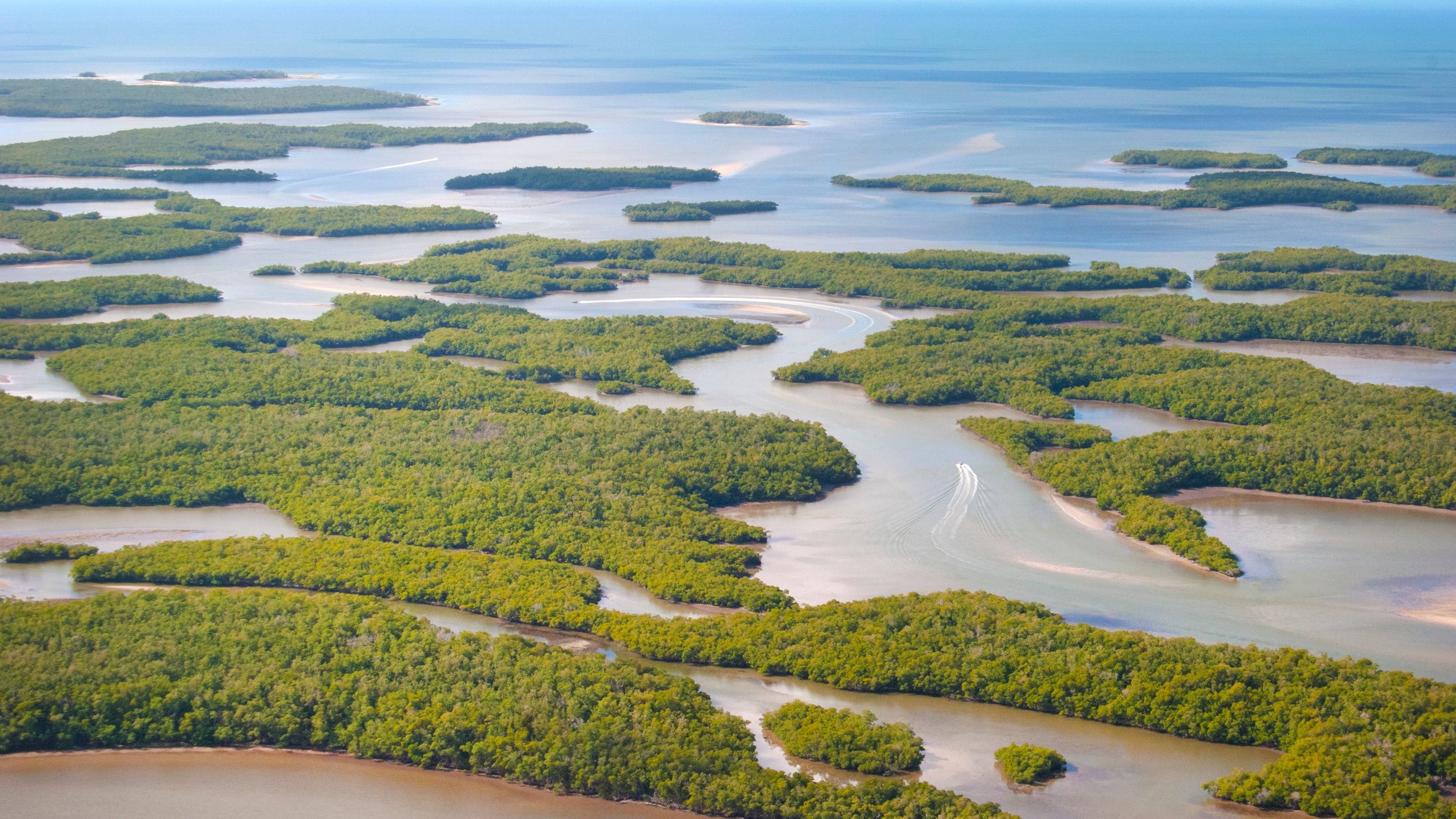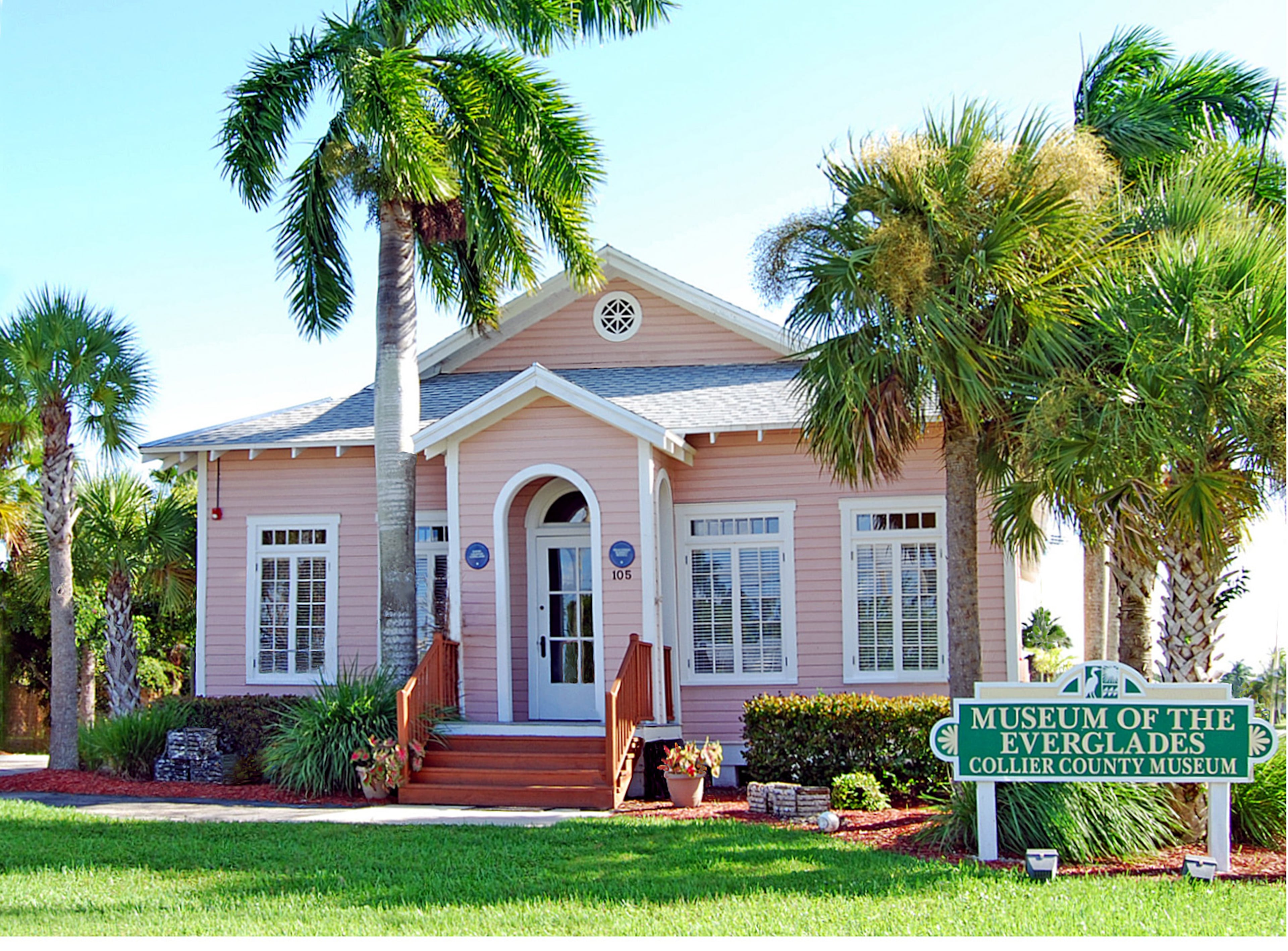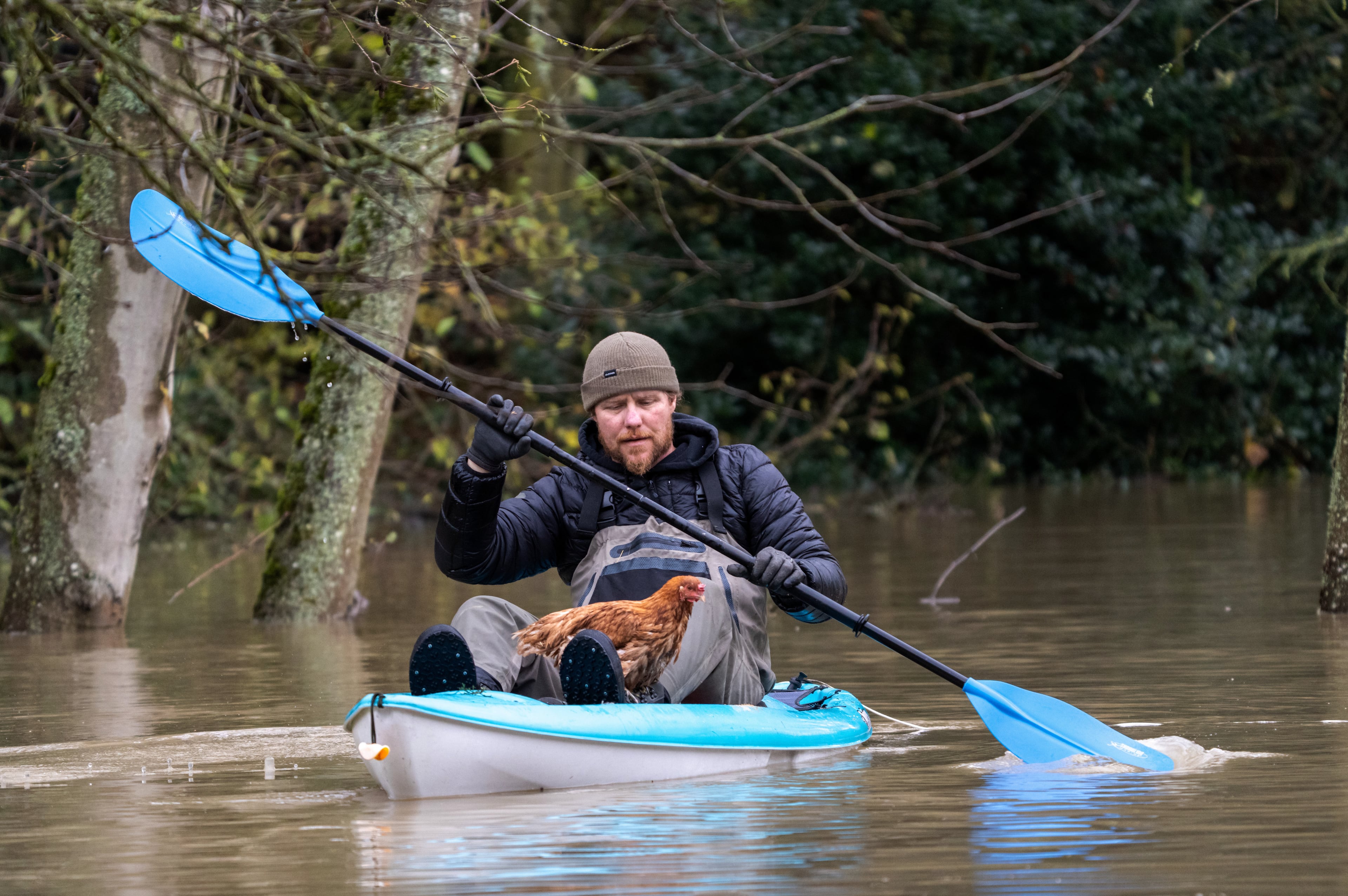Slow down to take in the beauty of Florida’s forgotten frontier

Editor’s Note: Offices and visitors centers at national parks and preserves may be closed and websites may not be updated with the most current conditions during the government shutdown.
EVERGLADES CITY, Fla. ― As my boots crunched along the unpaved pathway, I heard a huff from the mangroves. Was it a black bear, a Florida panther or maybe the mythological Skunk Ape? Alone on the Marsh Trail, I was eagerly anticipating and admittedly afraid to encounter one of the many predators that stalk these swamps.
Inches from my shoe, a thick, dark rope wiggled into the marsh grass too fast to know if it was a black racer, an Eastern indigo or a Southern swamp snake. I looked over my shoulder at the murky brown water where an alligator snout side-eyed me with indifference.
A mangrove cuckoo called in the distance, seeming to mock my nervousness as if it knew that the true, statistical threat to my safety was out on busy U.S. Highway 41, not on this peaceful trail in the Ten Thousand Islands National Wildlife Refuge.
Still, I didn’t dare sit on a nearby bench, lest my feet dangle too close to the water’s edge. Instead, I stood on a weathered boardwalk to gaze out at Florida’s submerged southwest border and was reminded that this diverse Everglades region is unlike any other ecosystem in the world.
A century ago, industrious entrepreneur Barron Collier convinced northerners to explore this wild side of the United States. Although Florida’s once exotic frontier feels largely forgotten today, it still offers a rare opportunity to discover why the swamps, not the beaches, once lured the wealthiest of Americans.

Central hub for exploration
“Imagine going on safari without going to Africa.” Thomas Lockyear, manager of the Museum of the Everglades, challenged me to envision Everglades City the same way Collier did when he arrived. I tried to picture the motel parking lots lined with towering bald cypress trees and the seafood shacks replaced by tomato, grapefruit and avocado fields.
“Birds of every color of the rainbow. Big game hunting. The tarpon craze. It’s one-stop shopping in Collier’s mind,” Lockyear said. A short boat tour convinced the young advertising magnate to purchase more than 1 million acres in the region, spurring the growth of Everglades City as the seat of Collier County in the 1920s.
Collier also broke ground on a two-lane road connecting Naples on the west coast to Miami on the east coast. Now part of U.S. 41, the roadway passes through 109 miles of wilderness, home to the Everglades National Park, Collier-Seminole State Park, Ten Thousand Islands National Wildlife Refuge, Florida Panther National Wildlife Refuge, Fakahatchee Strand Preserve State Park and Big Cypress National Preserve.
As these unique habitats received designation as protected areas, the development of Everglades City, located 4 miles south of U.S. 41, remained isolated from the rest of Collier County’s expansion along the Gulf Coast. No longer the county seat, it is now part of the Naples-Marco Island metro area.
Tourism has always been the lifeblood of Everglades City. The central hub for exploring these protected ecosystems, it is home to some of the oldest historical and cultural landmarks of Florida’s last frontier.
Once a laundry facility for Collier’s guests at the former Everglades Inn, Museum of the Everglades has exhibitions spanning 2,000 years of local history, including one dedicated to plume hunting in the late 1800s and another devoted to the short-lived Southwest Mounted Patrol, a motorcycle police unit that once patrolled U.S. 41.
Smallwood Store Museum on Chokoloskee Island was once a trading post for Native Americans and the pioneering Gladesmen families. It’s now a living time capsule where you can see exhibits dedicated to the pioneering lifestyle and buy souvenirs including books, DVDs, Seminole carvings, alligator heads and T-shirts.
Florida’s version of Bigfoot, the Skunk Ape, is considered fictitious by the scientific community yet it has been present in Indigenous folklore for generations. Believers and naysayers alike may want to check out the cast of an alleged Skunk Ape’s footprint at Skunk Ape Research Headquarters in nearby Ochopee. Primarily a gift shop with some live animal exhibits featuring gators, snakes and turtles, the center is a campground and meeting point for launching pole boat tours and guided hikes through Big Cypress National Preserve.
Since Collier’s time, the wildlife population in the Everglades has diminished significantly, say locals. But conservation efforts often meet resistance. Smallwood Store Museum owner Lynn McMillin says she rarely sees marsh rabbits like she did in her youth, but she’s had as many as five invasive Burmese pythons in her yard at once. Skunk Ape Research Headquarters owner Jack Shealy laments how increased traffic on U.S. 41 has caused the death of virtually every species of animal that calls this region home.
However, both express frustration over governmental conservation efforts that restrict boat tours, preventing them from living off the land the way their families did for generations.
“We don’t like the government,” said Jeffrey Campbell, a 17th-generation Florida Maroon with Seminole ancestry who operates Wildman’s Everglades Swamp Buggy Excursions and wrestles alligators at Wooten’s Animal Sanctuary & Alligator Park in Ochopee. “We want to keep the Everglades the way it is. We love our way of life here.”
Scenic drives and hiking trails
Established in 1974, Big Cypress National Preserve was the first nature preserve of its kind in the United States. Its 729,000 acres were purposely excluded from Everglades National Park to allow activities like off-road vehicle use, hunting and traditional Native American usage that’s restricted within national park boundaries.
The best time to visit is November through May, when there are fewer bugs, lower temperatures and more diverse wildlife sightings. A certified Dark Sky Park, it hosts monthly astronomy programs. To learn more, visit the Nathaniel P. Reed Visitor Center.
Families with children and casual adventurers looking for easy hikes will enjoy the short, low-impact strolls on the boardwalks at Kirby Storter Roadside Park and H.P. Williams Wayside Park. There’s also a 16-mile Turner River Scenic Drive for exploring the scenery from the comfort of a vehicle. For intrepid explorers, the 5-mile out-and-back Fire Prairie Trail offers one of the best opportunities to spot wildlife far from the highway.
No matter what kind of explorer you are, visitors are advised to bring sunscreen, plenty of water, bug repellent, a hat and sturdy (ideally waterproof) hiking shoes. Many trails are flooded to ankle or waist levels between May and November, so waders are recommended for deep exploration. Also note that Big Cypress National Preserve is home to the South Florida immigration detention center nicknamed Alligator Alcatraz, and visitors are advised to steer clear of it.
Safer than highways
Driving along the 24-mile, mostly gravel Loop Road in Big Cypress, I noticed that nearly every culvert I passed had a great blue or white heron in it. I was tempted to chance an animal encounter by wandering onto the loop’s many hiking trails. But only a few minutes onto the Gator Hook Trail, the path required wading into the knee-deep cypress swamp. I decided instead to hike the dark, dense Tree Snail Hammock Trail until I saw signs warning visitors not to venture into this panther-prowling territory alone.
Near the end of the route, I came upon a cottonmouth snake dying in the center of the road. No matter how vulnerable I felt on the trails, statistics say I’m safer alone with the wildlife than the animals are on the roadways. Florida has had a single fatal black bear attack in recorded history while roughly 250 bears are killed on Sunshine State roadways each year.
I slowly eased my way off Loop Road and onto U.S. 41, knowing that the next time I wander the trails of Florida’s forgotten frontier, I’ll be just as safe — if not safer — than on the highway.
IF YOU GO
Everglades City is 647 miles south of Atlanta via I-75. Hartsfield-Jackson Atlanta International Airport offers direct flights to Southwest Florida International Airport in Fort Myers and Miami International Airport, both a 1.5-hour drive away.
Attractions
Ten Thousand Islands National Wildlife Refuge. Free. Marsh Trail parking lot, Tamiami Trail E, 3 miles east of Collier-Seminole State Park. 239-657-8001, fws.gov
Museum of the Everglades. Free. 105 Broadway Ave. W, Everglades City. colliermuseums.com
Smallwood Store. $5. Boat tours $50. 360 Mamie St., Chokoloskee. smallwoodstore.com
Big Cypress National Preserve. Free. Nathaniel P. Reed Visitor Center, 33000 Tamiami Trail E, Ochopee. Loop Road entrance at 50910 Tamiami Trail E, Ochopee. nps.gov/bicy
Wooten’s Everglades Airboat Tours & Alligator Park. $9. 32330 Tamiami Trail E, Ochopee. wootenseverglades.com
Skunk Ape Research Headquarters & Everglades Adventure Tours. $99-$149 pole boat tour. 40904 Tamiami Trail E, Ochopee. skunkape.info
Wildman’s Everglades Swamp Buggy Excursions. $125-$250 for a 3-4 hour private swamp buggy tour for up to 6 participants. 50910 Tamiami Trail E, Ochopee. evergladesswampbuggy.com
Where to Stay
Trail Lakes Campground. $25-$225. 115-site campground for tents and RVs, plus rustic air-conditioned cabins and Native American-style thatched roof huts. Skunk Ape Research Headquarters, 40904 Tamiami Trail, U.S. 41, Ochopee. 1-800-504-6554. evergladescamping.com
Rod & Gun Club. $149-$195. This historic hotel and restaurant was once owned by Barron Collier as a hotel for hunting guests. 200 W. Broadway, Everglades City. rodandguneverglades.com
Where to Eat
Joanie’s Blue Crab Cafe. $12-$36. Roadside cafe serving sandwiches and tacos. 39395 Tamiami Trail E, Ochopee. 239-695-2682. www.facebook.com/joaniesbluecrabcafe
Camilla Street Grill. $13-$47. Laid-back waterfront restaurant specializing in fresh caught stone crab, fish and frogs. 202 Camellia St. W, Everglades City. 239-695-2003, camelliastgrill.com

